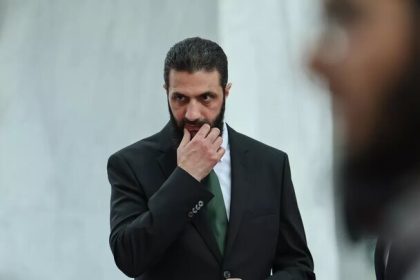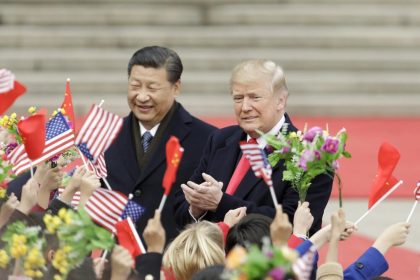With art, you can’t look at politics. You should look more than that.” This sentence was a memorable phrase from the conversation with Rand. Rand al-Hadithi, a freelance journalist living in Dubai, from the articles he used to write for GQ MiddleEast; I recognized He has published works about Iran and had conversations with Iranian artists. I asked him about the interview with Iranian artists and his answer was the golden sentence and he continued like this: “I am working as an art writer and I try to cover all the countries of the Middle East in my writings.” I don’t like to focus only on a few specific countries. I have written articles about countries like Iran, Iraq, Lebanon, Syria, Algeria and Saudi Arabia and I would like to maintain this diversity. Some countries may be less interesting for political reasons, but art should have a higher perspective than politics.
Fashion journalism in the Middle East
In recent years, with the growth of fashion in the countries of Southwest Asia and North Africa, the need for fashion media in these countries has increased. European and American fashion magazines have identified this region as a new audience and Arabic and Middle Eastern editions of fashion magazines have been launched. These magazines and media often choose Dubai as the center of their activities. Magazines such as Vogue, Harper’s Bazaar, Grazia and GQ monitor fashion news and events in the Middle East and Arab countries. Allocating special editions for different countries and regions can increase the audience of the magazine and help the media to hear voices and cover diverse news. By this means they increase their influence all over the world; But usually, there is a dominant view and policies centered on Europe and America in these media. Generally, the editors and editors of Arabic and Middle Eastern editions of fashion magazines are selected from non-Arab and non-Middle Eastern journalists. It’s as if the managers of these magazines still don’t have enough confidence in young journalists in South West Asia. However, there are many publications, journalists, analysts, critics and fashion magazines working in the Middle East countries that try to disrupt the prevailing stereotypes about this region. They cover the domestic fashion events of the Middle East and present a more authentic form of the region’s culture and art to their global audience.


GQ Middle East, a different look at Middle Eastern fashion and culture
The 21st international edition of GQ magazine is dedicated to the Middle East. Compared to its competitors, this magazine, which started its activity in 2018, has been able to have a more comprehensive look at fashion and culture in the Middle East countries. The use of local authors and the selection of topics that reflect the cultural and artistic conditions of the Middle East have created an important distinction between GQ Middle East and other editions of international fashion magazines in the Middle East. In this interview, I have discussed the working conditions of fashion journalism in Southwest Asia and North Africa (Middle East) with Rand Al-Hadithi, a freelance writer and journalist, who has worked with GQ Middle East for two and a half years.

There is no requirement to study fashion journalism!
“I studied film production in Dubai. They taught us how to write plays and how to make videos and edit films.” Rand, who was interested in art and culture as a professional subject from the beginning, followed his interest as follows: “During my student days, I was looking for internships a lot. . Of course, not an internship for magazines! I mostly did marketing, writing and video production. But since I was interested in art, culture and fashion, I tried to include them in my work. For example, I always paid attention to the design of costumes for movies and their fit with the characters of the movie. Narrating skill is one of the essential skills of writing. Fashion writing is no exception to this rule, and Rand has been able to strengthen this skill by studying film production and writing films and plays. “Before I am a writer, I am a storyteller and narrator. The training I received about filmmaking helped me to have a better artistic vision and to learn how to narrate.”
Introduction to GQ middle east fashion magazine
“I was in my last year of university when I found out through one of my friends that GQ was looking for an intern. I applied for an internship as an assistant editor and was accepted. After three months, I started writing for the magazine. This was very exciting because writing for the print version of the magazine does not usually happen this soon. After that, my collaboration with GQ continued full-time.” He explained about the way he worked and the interviews he did: “I was usually trying to figure out what questions I would like to be asked if I were an artist. I was trying to ask questions that there is no information about that topic anywhere else, and I like to choose unique topics.”

Careers related to fashion journalism
When we look at job positions in fashion magazines, we realize that there are different jobs in a fashion magazine. From fashion writing to editorial styling, it is used in a fashion magazine. “There are different things to do in a fashion magazine and as a fashion journalist. You can be a fashion writer or a fashion critic or analyst. These three are different. For example, fashion analysts are people who write reports about fashion shows and trends. But, for example, fashion critics are not necessarily fashion writers. They may make and operate YouTube videos.
Interview with Odunayo Ojo, journalist and fashion critic
Fashion writers must have extensive knowledge about the fashion industry. Not only the current status of brands, but also information about the archive and history of a brand is essential. The more this information, the fashion writer can write better content and conduct more detailed interviews.” In a fashion magazine, in addition to words, images also play a significant role. The images in fashion magazines are the result of the efforts of stylists and fashion directors. Rand says about these jobs: “Stylists and fashion directors are in charge of directing the images of the magazine. They put different items together and convey a message to the audience by creating the image they want. Some stylists also write for magazines. But this is not their main task. They only have the duty to communicate with the audience through images.”


Job titles in fashion magazines
In each fashion magazine, there is a different hierarchy. Different job titles such as editor in chief, feature writer, deputy editor, contributing editor and many other examples, together promote a fashion magazine. This hierarchy is different in different magazines and job titles are not the same in all magazines. You can see different job titles in the masthead section of each magazine. Some of them, like the editor, are essential for all magazines. For example, in GQ Middle East, there was an editor and an art director in charge. The art director is the one who is responsible for the overall design of the magazine and decides for the cover design of the magazine. He creates the visual language of the magazine. “Due to the importance of the digital space and the web in everyday life, often printed fashion magazines have launched a digital version of their magazine. This has created a new job title called digital editor. The digital editor of the fashion magazine manages the content of the digital department, which includes the website, Instagram accounts, YouTube, Twitter, etc. In a magazine as big as Vogue, there are other titles. For example, different departments have different editors. Fashion editor, cultural section editor, news and trends writer, etc. In fact, these titles depend on two things: the size of the magazine and the topics covered in that magazine.”


The relationship between freelance journalists and fashion magazines
Nowadays, many journalists and fashion writers are interested in collaborating with magazines freely. Working as a freelance reporter allows journalists to work with different magazines and not be employees of a particular publication. But this type of work also brings problems: “Freelance work is hard. A freelance journalist must have all the necessary skills of journalism. Be a good researcher, pay attention to details, know grammar and writing rules, and know the tone of writing in different magazines. A journalist who works full-time with a magazine knows the writing tone of the magazine well, but a freelance journalist maintains his own writing style; He should be able to know and respect the writing style of the different magazines he works with.
Fashion writing and fashion magazines in the Middle East
The growth of the fashion industry in the countries of Southwest Asia and North Africa has intensified the need for diverse fashion media in this region. The developments pioneered by the United Arab Emirates and the city of Dubai have been extended to other countries such as Saudi Arabia.
Fashion developments in Arab countries: an interview with Hadeel Hussain, a fashion analyst in Saudi Arabia
Long-term planning for the fashion industry in these countries requires attracting a serious audience, and this task is the responsibility of fashion writers and fashion magazines. Fashion in the Middle East is very young. About fashion journalism in the Middle East, I can say that most job opportunities are in Dubai. Because most fashion magazines such as Vogue and Harper’s Bazaar operate in Dubai. But there are many independent magazines that operate in other countries such as Lebanon. I think fashion journalism is a developing market in the Middle East and there is still a lot of work to be done. In my opinion, the higher the number of successful fashion designers in the Middle East, the more interesting news we have to share with the global audience.”

A look at the future of fashion journalism in the Middle East
Many writers and editors of fashion and fashion magazines in the Middle East are from European and American countries who studied fashion journalism. After graduation, they work in international magazines and continue to be fashion reporters in different editions of these magazines around the world. One of the reasons for this issue is the lack of schools and universities in the Middle East to teach fashion journalism. “In Dubai, there are schools for studying various fashion fields, but there is no news of fashion journalism. Usually, people interested in studying fashion journalism go to universities such as St. Martins in London and Parsons in New York and are trained outside the Middle East. make more effort. Rand believes that fashion writing in the Middle East is very new, but in the near future there will be important developments in this field. Fashion in the Middle East countries is growing seriously, and parallel to it, a new generation of fashion analysts and critics have started working on different platforms. I think that in the Middle East, we are witnessing a greater tendency towards different cultures and being influenced by them. However, the common subcultures among the youth (youth culture) have a retrogressive view and feed more on nostalgia and the past. For this reason, I think the countries of the Middle East have not yet found their style in fashion; But this is the beginning. In my opinion, we are at the stage of gathering information and ideas to be able to create our own style, and I think that in the next ten years, the countries of the Middle East will be able to present a more coherent narrative of their fashion.”
Latest Passing over countries : Spain | Dominica | United Arab Emirates
RCO NEWS

















